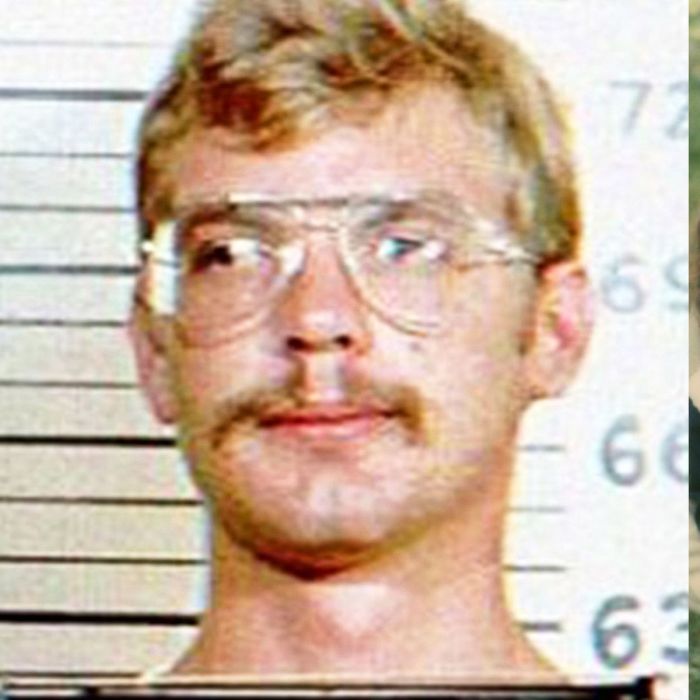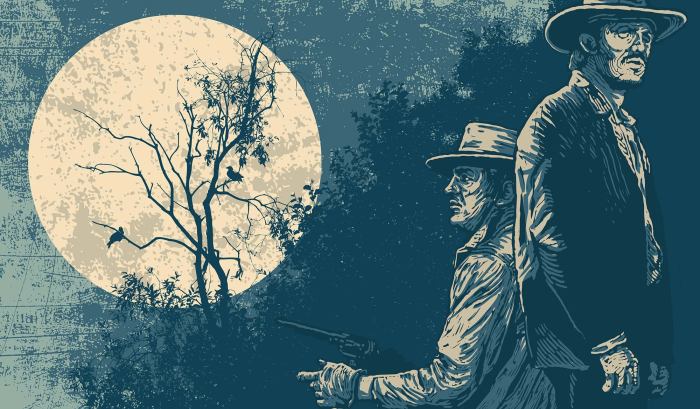
True crime investigations have captivated audiences worldwide, shining a light on the darker corners of humanity while exploring the complexities of crime and justice. These narratives not only provide a thrilling glimpse into real-life mysteries but also provoke critical discussions about societal implications and the effectiveness of our justice systems.
From infamous cases that have shaped public perception to sophisticated investigation techniques enhanced by modern technology, this exploration delves deep into the world of true crime. By analyzing notable cases, we uncover the threads that tie these stories together and examine the evolving role of media in shaping our understanding of crime.
True Crime Cases

True crime cases have captivated audiences for decades, often reflecting society’s deeper issues. The stories of real-life crimes, their investigations, and the legal battles that follow provide insight into human nature and societal flaws. These cases not only highlight criminal behavior but also reveal the complexities of justice and the impact on victims and communities.One of the most notorious true crime cases is the O.J.
Simpson trial, which took place in the mid-1990s. The case involved the murder of Nicole Brown Simpson and Ron Goldman, leading to a highly publicized trial that gripped the nation. The investigation began with 911 calls and evidence collection at the crime scene, with forensic experts analyzing DNA, blood samples, and hair. The trial revealed significant racial tensions and issues surrounding media influence, ultimately culminating in Simpson’s controversial acquittal, which had lasting implications on public perception of the justice system.
Common Themes in True Crime Cases
Several themes emerge consistently across notable true crime cases, shedding light on broader societal issues. These themes not only provide a framework for understanding specific cases but also raise questions about justice, morality, and the human condition.
- Media Influence: The media often plays a crucial role in shaping public perception of high-profile cases, affecting jury selections and trial outcomes.
- Racial Tensions: Many cases highlight existing societal divides, as seen in the O.J. Simpson trial, where race was a significant factor in public and legal reactions.
- Justice System Flaws: Investigations may expose inadequacies in the legal process, including mishandling of evidence and prosecutorial misconduct.
- Victim Advocacy: True crime cases often lead to increased awareness of victims’ rights and the importance of advocacy for those affected by crime.
- Criminal Psychology: Understanding the motivations behind criminal behavior brings to light the complexities of human psychology and societal influences.
“The sensational nature of true crime allows society to confront its darker sides while seeking justice.”
Investigation Techniques
In the realm of true crime, investigation techniques play a pivotal role in unraveling mysteries and delivering justice. These methods blend science, technology, and psychological understanding to gather evidence and profile suspects, enabling law enforcement to piece together complex narratives. By employing a range of techniques, investigators can transform seemingly insurmountable challenges into comprehensible cases.One of the foundational aspects of crime investigations involves the meticulous collection of forensic evidence.
This process not only includes gathering physical evidence from crime scenes but also involves the careful analysis of that evidence in a laboratory setting. Forensic evidence can include fingerprints, blood samples, hair, and fibers, among others, all of which can provide critical insights into the events that transpired. Modern forensic science utilizes advanced methods, such as DNA analysis and toxicology, to offer robust proof that can either implicate or exonerate suspects.
Forensic Evidence Collection
The importance of forensic evidence collection cannot be overstated, as it forms the backbone of many crime investigations. Key techniques in this area include:
- Crime Scene Investigation: This involves securing the scene, documenting it through photographs and sketches, and collecting physical evidence in a systematic manner to avoid contamination.
- DNA Analysis: Utilizing techniques such as Polymerase Chain Reaction (PCR) and Short Tandem Repeat (STR) analysis, investigators can identify individuals based on their unique genetic markers.
- Ballistics Analysis: This examines firearms and ammunition to determine if a particular weapon was used in a crime, which can link a suspect to the scene.
- Toxicology Reports: Analyzing bodily fluids for drugs or poisons helps investigators understand potential motivations or circumstances surrounding a crime.
Role of Modern Technology in Investigations
The infusion of modern technology into true crime investigations has revolutionized how evidence is processed and analyzed. Digital forensics, a leading edge in this domain, encompasses various methods that aid in uncovering digital evidence related to a crime. This evidence may include data from computers, smartphones, and various electronic devices.For instance, investigators can employ techniques to recover deleted files or analyze browsing history to establish a suspect’s activities leading up to a crime.
Social media platforms can also provide critical evidence, revealing communications and potential motives between individuals.
“Digital forensics has become integral in piecing together the timeline of events and understanding the relationships between suspects and victims.”
Psychological Profiling Methods
Psychological profiling is another vital tool used by investigators in true crime scenarios. This technique involves creating a psychological portrait of a suspect based on behavior patterns, motives, and past criminal activities. Profilers analyze crime scene details, victim characteristics, and the nature of the crime to deduce potential suspect traits.Key components of psychological profiling include:
- Behavioral Analysis: Investigators assess the crime’s nature and the perpetrator’s behavior to identify patterns that may hint at their personality and motivations.
- Victimology: Understanding the victim’s background, lifestyle, and relationships helps clarify why they were targeted, which can in turn inform profiling efforts.
- Geographic Profiling: This method uses the location of crime scenes to develop a map of the suspect’s possible residence, suggesting where they may live or operate.
Through these investigation techniques, true crime cases can be solved with greater efficiency and accuracy, bringing closure to victims and their families while ensuring that justice is served.
Media Representation

The portrayal of true crime in various media forms, particularly documentaries, films, and books, plays a significant role in shaping public perception of crime and justice. As audiences consume these narratives, they form opinions about not only the crimes themselves but also the people involved, the justice system, and societal norms. The way these stories are told can influence viewers’ understanding and emotional responses, often blurring the lines between fact and fiction.The accuracy of true crime representation varies widely across different media.
Documentaries tend to strive for factual integrity, often employing interviews, archival footage, and expert commentary. However, dramatizations, such as films and television shows, frequently embellish details for entertainment value. This can lead to a distorted perception of actual events, affecting how the audience understands the realities of crime and law enforcement.
Portrayal in Documentaries
True crime documentaries typically aim for a realistic depiction of events. They utilize a variety of techniques to engage viewers while adhering closely to factual elements. Documentaries often include:
- Interviews with victims’ families: These provide personal insights into the impact of crime on individuals and communities.
- Expert analysis: Professionals in criminology and law enforcement often provide context and explanations for criminal behavior and investigative techniques.
- Archival footage and photographs: Historical material enhances the authenticity of the narrative, allowing viewers to visualize the events as they unfolded.
Despite their intention to inform, these documentaries can inadvertently sensationalize crime, leading to a public that is often captivated by the dramatic elements rather than the stark realities.
Accuracy of True Crime Books vs. Dramatizations
Comparing true crime books and their film adaptations reveals discrepancies in narrative tone and accuracy. True crime literature often delves deeply into the psychological aspects of crime and the complexities of the legal system, providing a comprehensive view of events. In contrast, dramatizations tend to prioritize suspense and entertainment, leading to potential inaccuracies. Books like “In Cold Blood” by Truman Capote exemplify thorough investigative work, presenting a nuanced understanding of the crime and the criminals.
However, when adapted into films, such as the one based on Capote’s work, certain character motivations may be oversimplified or exaggerated to enhance drama.
Ethical Considerations in Media Representations
The ethical implications of how true crime is represented in media are significant. The following table Artikels key ethical considerations that creators must navigate when depicting real-life crime stories.
| Consideration | Description |
|---|---|
| Victim Sensitivity | Respecting the experiences of victims and their families, ensuring that narratives do not exploit their suffering. |
| Accuracy | Striving for factual integrity and avoiding sensationalism that could misrepresent events and people involved. |
| Impact on Public Perception | Recognizing how dramatizations can shape societal views on crime, justice, and marginalized communities. |
| Consent and Representation | Obtaining permission from those affected when sharing their stories and accurately representing their voices. |
| Rehabilitation of Offenders | Considering the potential for rehabilitation and the impact media representation has on public opinion regarding offenders. |
Media representations of true crime carry significant weight in shaping societal attitudes and understanding of criminal justice.
Final Thoughts

In conclusion, true crime investigations serve as both a mirror and a window into our society, reflecting the complexities of human behavior while educating us about the investigative process. As we examine these tales, we gain insight not only into the crimes themselves but also into the broader implications for justice and morality in our world.
General Inquiries
What defines a true crime investigation?
A true crime investigation typically involves the thorough examination of real criminal cases, focusing on the details of the crime, the investigation methods, and the impact on society.
How has technology changed true crime investigations?
Modern technology, including digital forensics and data analysis tools, has significantly improved the accuracy and efficiency of investigations, allowing for quicker resolutions and more precise evidence collection.
Why are true crime stories popular?
True crime stories resonate with audiences due to their inherent suspense, the exploration of human psychology, and the moral complexities surrounding justice and punishment.
Are true crime documentaries accurate?
While many strive for accuracy, the portrayal of true crime in documentaries can vary, often influenced by creative storytelling techniques that may embellish or simplify certain elements.
How do true crime investigations impact public perception?
True crime investigations can shape public understanding of crime and justice, sometimes leading to misconceptions or heightened fears about safety and criminality.





